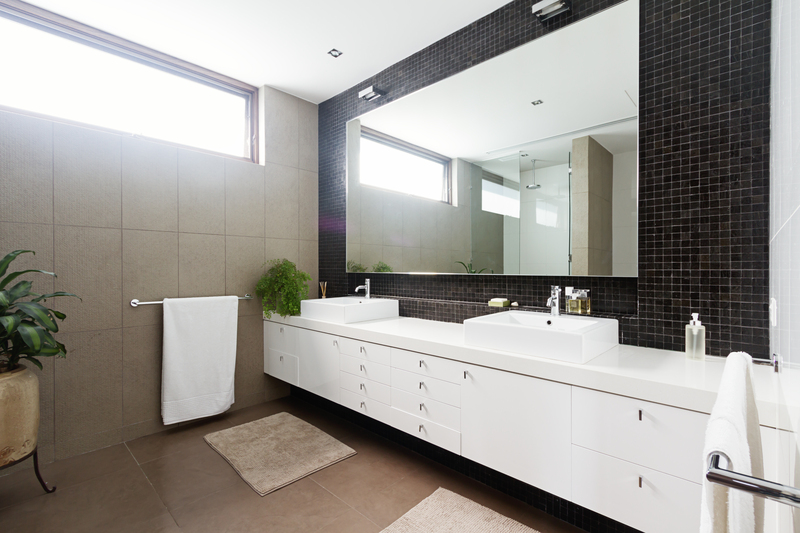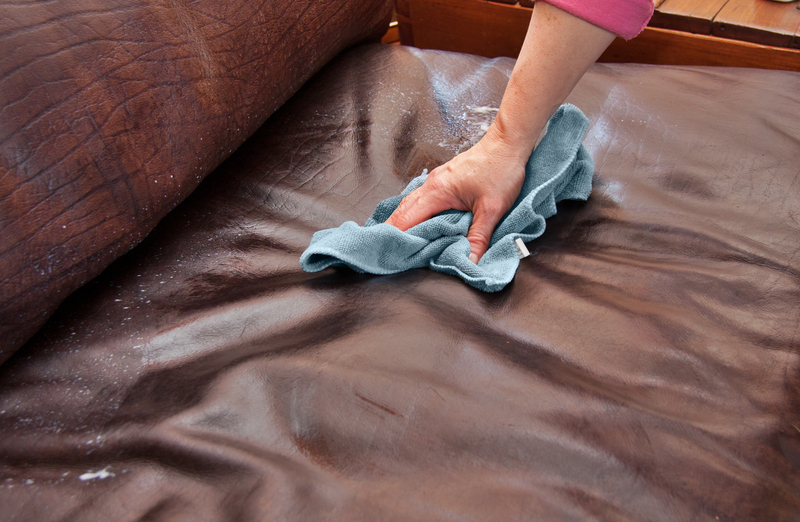Top Tips for Cleaning Burnt-on Residue Off Your Stovetop
Has burned-on food or stubborn grease turned your stovetop into a sticky, unsightly mess? Whether you have a glass, ceramic, gas, or electric stovetop, removing burnt-on residue can be a real challenge. But don't worry--restoring your cooktop to a sparkling clean state is not an impossible task! In this guide, you'll find expert tips, step-by-step methods, and useful product suggestions for cleaning burnt-on residue off your stovetop quickly and safely.
Why It's Essential to Clean Burnt-on Stains from Your Stovetop
Beyond appearances, regularly cleaning burnt-on food or grease from your stove prevents fire hazards and keeps your kitchen hygienic. Stubborn residue can cause uneven heating, release unpleasant odors, and even damage your appliance over time. Tackling these messes with the right techniques helps preserve your stovetop's finish and ensures every meal starts with a clean slate.

Understanding Your Stovetop Surface
Before you begin cleaning, it's crucial to know what type of stovetop you have. The ideal method for removing burnt-on residue varies depending on the material and heating mechanism of your stove. Here are the most common types:
- Gas stove tops: Usually feature removable grates and burners.
- Electric coil stovetops: Have raised, removable coils.
- Glass or ceramic cooktops: Smooth, flat surfaces that require gentle cleaning methods.
- Induction stoves: Similar to glass or ceramic, but may have manufacturer-specific care requirements.
Identifying your stovetop surface ensures you'll choose methods and products that won't scratch, discolor, or damage the finish.
Pre-Cleaning Preparation: What You'll Need
Gather these basic supplies before you begin to remove burnt-on residue from your stovetop:
- Non-abrasive sponges or microfiber cloths
- Soft scrubbing pads or specialized cooktop cleaners
- Plastic or silicone scrapers (avoid metal unless specified)
- Baking soda and white vinegar
- Mild dish soap
- Hot water
- Paper towels or clean dry cloths
- Rubber gloves (optional for sensitive skin)
Tip: *Always ensure that your stovetop is completely cool and switched off* before you begin cleaning. Unplug electric stoves to minimize any electrical risk.
Step-by-Step: How to Clean Burnt-on Residue Off Your Stovetop
1. Remove Loose Debris
Begin by wiping away crumbs, loose food, and any light spills with a damp cloth. For gas stoves, remove the grates and burner caps and set them aside for separate cleaning.
2. Soften the Burnt-on Stains
The key to tackling burned-on residues is loosening them before you start scrubbing. For most stovetops:
- Soak a clean cloth or paper towels in hot, soapy water.
- Lay the wet cloth over the stubborn stain for 10-15 minutes to soften the residue.
This step makes it easier to lift off stubborn messes without scratching or damaging your stove's surface.
3. Apply a Gentle Scrubbing Agent
For burned-on food or grease that remains stuck, try one of these tried-and-true cleaning agents:
- Baking soda and water paste: Mix a few tablespoons of baking soda with just enough water to make a thick paste. Apply to the stained area and let it sit for 15-20 minutes.
- White vinegar: Spray or pour vinegar directly onto the stain, let it fizz, then gently wipe away.
- Store-bought cooktop cleaner: Choose formulas designed for your stove's surface. Follow manufacturer instructions for best results.
Tip: Avoid harsh abrasives or bleach-based agents for glass or ceramic cooktops as they can scratch or dull the finish.
4. Scrape Away Stubborn Residue
Once the residue is softened, use a plastic scraper (or a specialized razor blade for glass stoves) held at a low angle to gently lift off the stubborn debris.
- Work slowly and carefully to avoid gouging or scratching the surface.
- Repeat the soaking or paste application as needed for persistent spots.
5. Final Wipe and Shine
Finish by washing the entire stovetop with mild dish soap and hot water, removing all cleaning product and residue. Buff the surface dry with a clean microfiber cloth for a streak-free shine.
Cleaning Burnt-on Residue: Pro Tips by Stovetop Type
Cleaning Glass and Ceramic Stovetops
- Always use non-abrasive sponges and avoid steel wool.
- A razor blade scraper is safe for glass or ceramic but use gently and only when necessary.
- Specialized glass cooktop cleaners can help remove tough stains and protect the finish.
- Never use excessive water--liquid can seep into stove controls and cause damage.
Tips for Gas Stove Tops
- Remove grates and burners and soak them in hot, soapy water for 20-30 minutes.
- Use a stiff nylon brush or sponge to scrub away burnt-on gunk from removable parts.
- Ensure all parts are thoroughly dry before reassembly.
- Clean under the burners and check for clogged gas orifices--use a toothpick, never a metal pin.
How to Tidy Up Electric Coil Stovetops
- Unplug and remove the coils before cleaning.
- Wipe coils with a damp cloth (never soak in water to avoid electrical hazards).
- Clean drip pans by soaking in hot, soapy water and scrubbing with a soft pad.
- Wipe the cooktop underneath the coils with your favorite cleaning solution.
Gentle Cleaning for Induction Stoves
- Stick to gentle pastes or specialty cooktop sprays--avoid anything abrasive.
- Remove residue with a soft scraper and always buff dry with a microfiber cloth.
- Check your manufacturer's manual for recommended cleaning products.
Natural Solutions for Cleaning Burnt-on Residue on Your Stove
Want a green approach to removing burnt-on food from your stovetop? Natural products like baking soda, vinegar, and lemon juice are safe, affordable, and effective. Here's how to use them:
- Lemon and baking soda: Sprinkle baking soda on stains, then scrub gently with half a lemon. Rinse and dry for a natural shine!
- Vinegar and salt: Mix equal parts white vinegar and salt, apply to burnt spots, let it sit, and wipe away.
Top Prevention Tips to Avoid Burnt-on Residue
- Wipe up spills immediately after each use to prevent buildup.
- Use stovetop covers or liners for easy cleanup.
- Regularly check and clean under grates, coils, or burner caps to keep your stove in pristine condition.
- Deep-clean once a week to remove any overlooked residues.
Common Mistakes to Avoid When Cleaning Your Stovetop
- Never use steel wool or abrasive pads on glass or ceramic cooktops.
- Don't use knife blades or metal scrapers unless specified as safe.
- Never soak electric parts or gas burners in water for extended times.
- Always allow your stove to cool completely before cleaning.

FAQs: Cleaning Burnt-on Residue Off Your Stovetop
How do you get baked-on stains off a glass stove top?
Apply a baking soda paste, let it sit, then use a non-abrasive sponge or razor scraper held at a low angle for stubborn stains. Finish with a glass stove top cleaner for shine.
Can I use baking soda and vinegar on a ceramic cooktop?
Yes! Baking soda and vinegar are safe and effective for ceramic cooktops. Just ensure you rinse well and buff with a microfiber cloth to avoid streaking.
What's the fastest way to clean burnt-on food off your stove?
Soak the area with hot, soapy water to loosen residue. For tough spots, use a baking soda paste or a specialty cooktop cleaner, then gently scrape if needed.
How can I prevent burns and heavy stains?
Wipe up all spills immediately, use cookware of the right size for each burner, and perform regular weekly cleanings to keep burnt-on food from accumulating.
Your Sparkling Stovetop Awaits!
A clean stovetop is the heart of a fresh, functional kitchen. Using these top tips for cleaning burnt-on residue off your stovetop, you'll easily tackle even the most stubborn burns--no harsh chemicals required. Remember, regular maintenance is the secret to keeping your cooktop gleaming and efficient for years to come.
- Know your cooktop and use the right method for your appliance.
- Be patient--gentle soaking and repeated applications beat aggressive scrubbing every time.
- Choose safe, effective cleaning agents tailored to your stove's surface.
With these comprehensive, practical cleaning methods, you'll never have to dread cleaning up burned-on food again. Your stovetop will always be ready for your next culinary masterpiece!